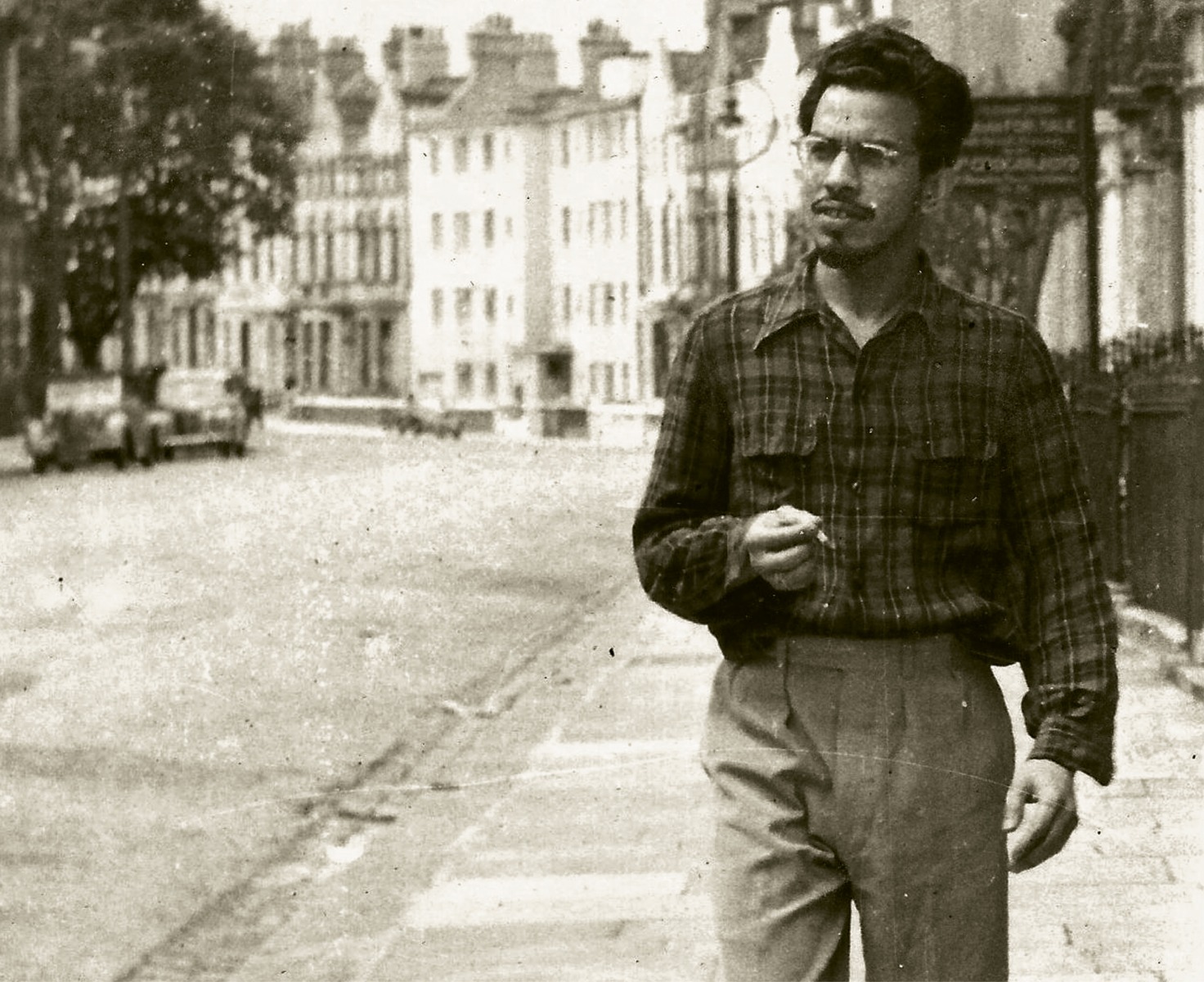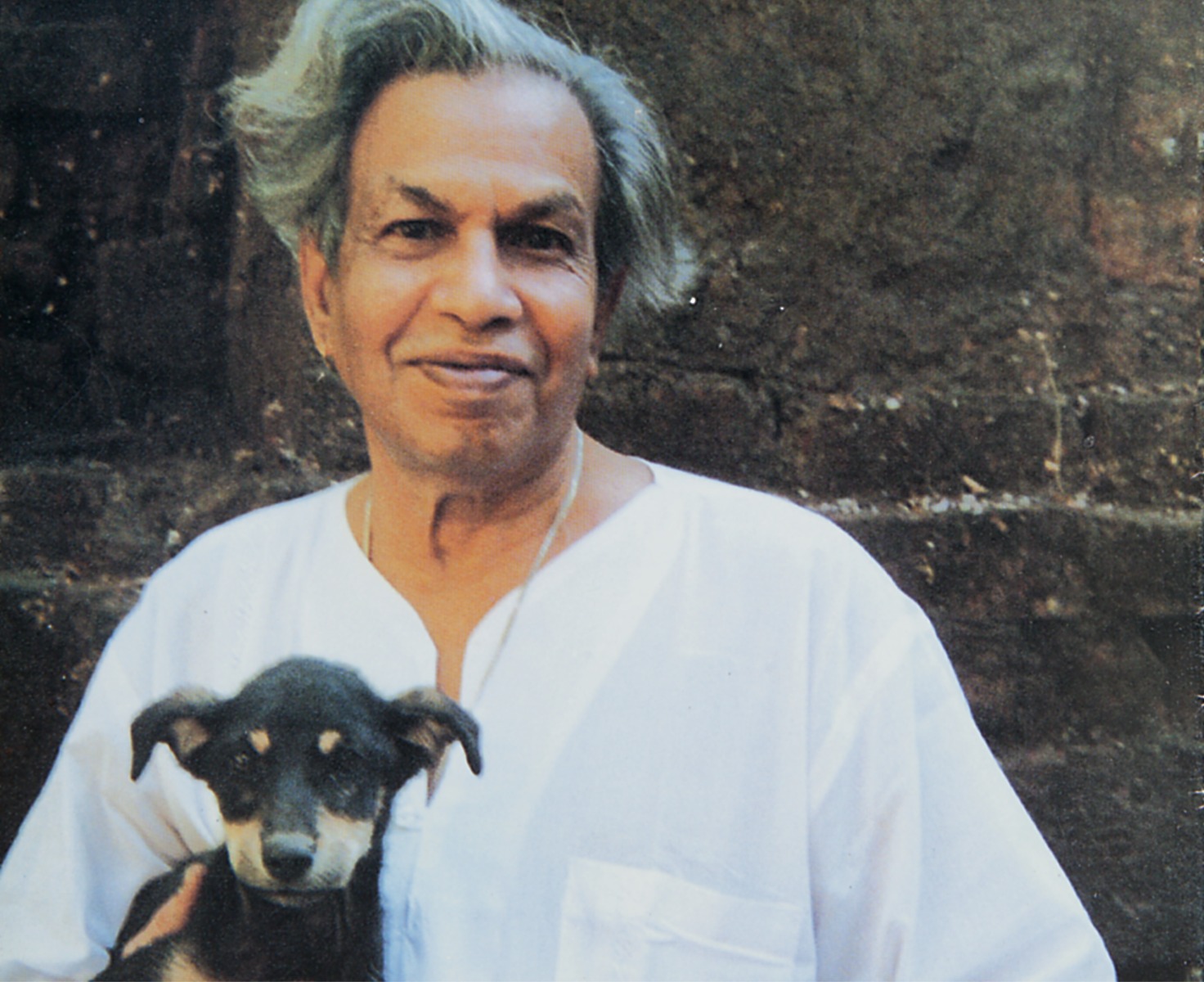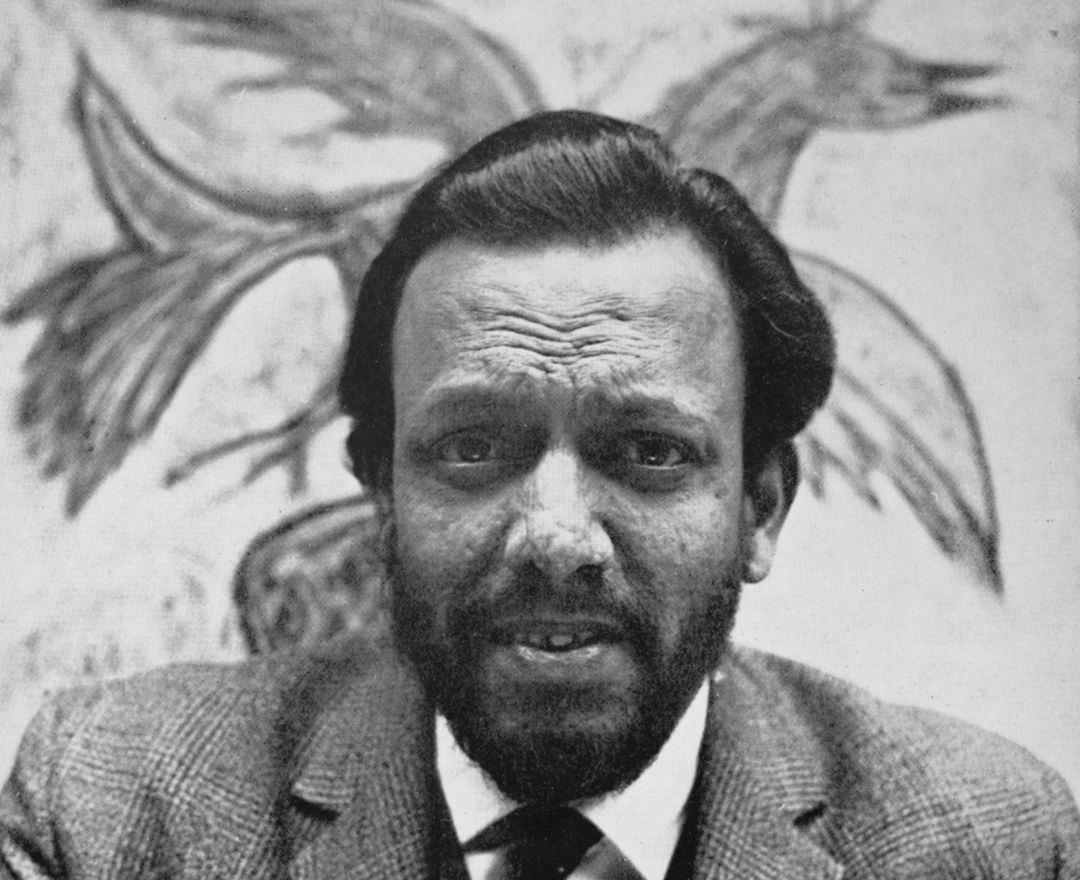1920

Born on November 10 in Baroda, Gujarat. His father, Krishnarao D. Bakre, a railway mechanic in Surat, is a former wrestler who is adept in sword-fighting, horse-riding, and music. Bakre’s uncle, his father’s brother, is a photographer in Nagpur running the studio ‘Kale and Bakre’. It is under his early guidance that young Bakre spends his summer holidays, gaining his earliest skills in terms of using a brush and paint.
1929
Comes to Bombay at the age of nine with his family for his education.
1932
At the age of twelve he is sent for training to sculptor Raghunath Phadke. Bakre collects lumps of clay that his teacher discards, carries them home and fashions them into whatever takes his fancy. Phadke looks at these works by accident, appreciating his apprentice’s talent, promptly bringing him on board for a Ganesh idol that he designs with Bakre for the festive season.
1936
At the age of sixteen, holds his first solo exhibition at Gokhale Education Society, Bombay.
1939
Enrols at Sir J. J. School of Art, Bombay, for a five-year course in modelling and stone-carving.
1940-43
Being an outstanding student, receives scholarships from the art school.
Gains early recognition with awards in sculpture from Bombay Art Society’s annual exhibitions. Some of these include cash prize from Maharaja of Bhavnagar in sculpture (1940); certificate in sculpture (1941); Sir Cowasji Jehangir ‘first prize’ in sculpture (1942); Raja Saheb of Bhore cash prize in sculpture.
Is awarded with a bronze medal in sculpture from Kolhapur Art Society.
1944
Receives the prestigious Lord Harding’s scholarship; awarded the annual Lord Mayo gold medal by J. J. School of Art, Bombay.
1945

Awarded ‘Professor O. V. Muller Memorial Cash Prize’ from Bombay Art Society.
Joins the Civil Aviation Flying School of the Government of India. Is transferred to Karachi Airport.
1946
Returns to Bombay, India.
1947

Joins the Progressive Artists’ Group with F. N. Souza, S. H. Raza, M. F. Husain, K. H. Ara, and H. A. Gade. The collective’s manifesto declares a breaking away from the academic style of art. The group’s agenda emphasizes a liberation from the restrictions of set styles, painting, and sculpting in a language which is significant to the changing times.
1948

Receives cash prizes from Bombay Art Society, including the Late Rustom Sodio Memorial Cash Prize for the best work in oil painting, and the President Sir Cowasji Jehangir Cash Prize in sculpture.
Separately, awarded the silver medal for best work in sculpture from Bombay Art Society.
1949
Progressive Artists’ Group shows in Bombay, Baroda, and Ahmedabad.
Receives cash prizes from Hyderabad Art Society, including the Princess of Berar Cash Prize for the best sculpture, and the first prize in the ‘best portrait’ category.
Is awarded the silver medal from Hyderabad Art Society.
1950
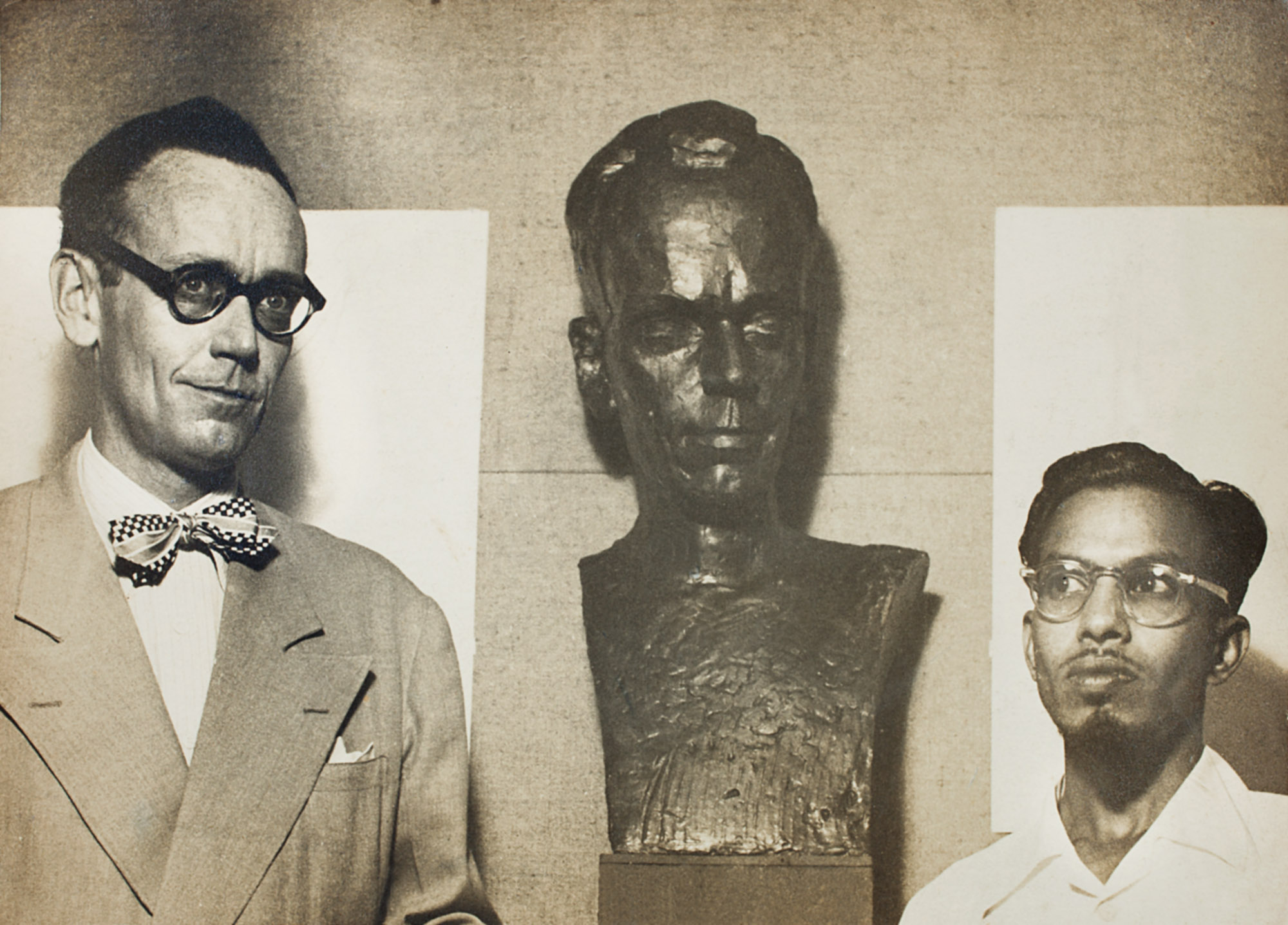
Makes a compelling bust of Wayne Hartwell, head of United States Information Service, in Bombay.
Certificate in sculpture and President Cowasji Jehangir Prize for best sculpture from Bombay Art Society.
1951
Solo show at Bombay Art Society salon, Bombay.
Works on painting the sets for artist and filmmaker Bal Chhabda’s Do Raha, for which he is paid handsomely. The artist uses the money to buy two tickets on a ship bound for London. The second ticket is intended for M. F. Husain though its unexpected beneficiary turns out to be Laxman Pai.
Goes to London. Does an assortment of jobs there such as coal miner, hospital porter, railway porter, mortuary worker, postman, graveyard mason, and carver.
Meets Dorothy, a German nurse, whom he subsequently marries.
1952
Is assigned to do photographic work for Indian High Commission, London.
1953
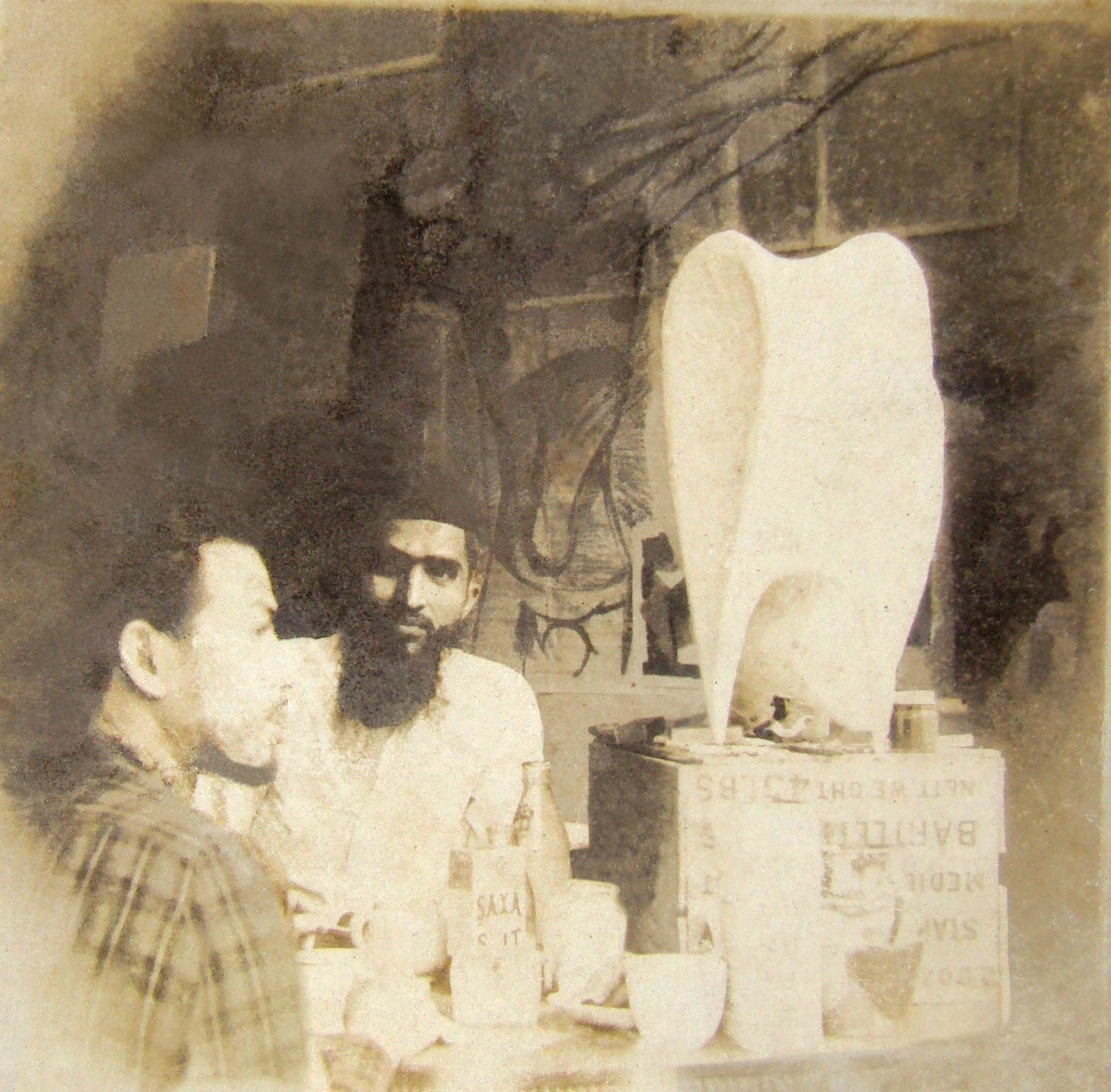
Participates in a group show with M. F. Husain and F. N. Souza at Galerie Palette, Zurich, and a group exhibition in Rome.
1954
Starts working at a jeweller’s shop in Bond Street, London. Begins to design costume jewellery and makes designs in gold, silver and platinum. His intricate designs become very popular. One bracelet design with a picture of Elvis Presley, which the artist creates, is a bestseller.
Tries his hand at restoration of brass musical instruments.
Group show at Galerie R. Creuze, Paris.
1958
Solo exhibition and also a group exhibition at Woodstock Gallery, London.
1959
Group and solo shows at Gallery One, London.
1960s
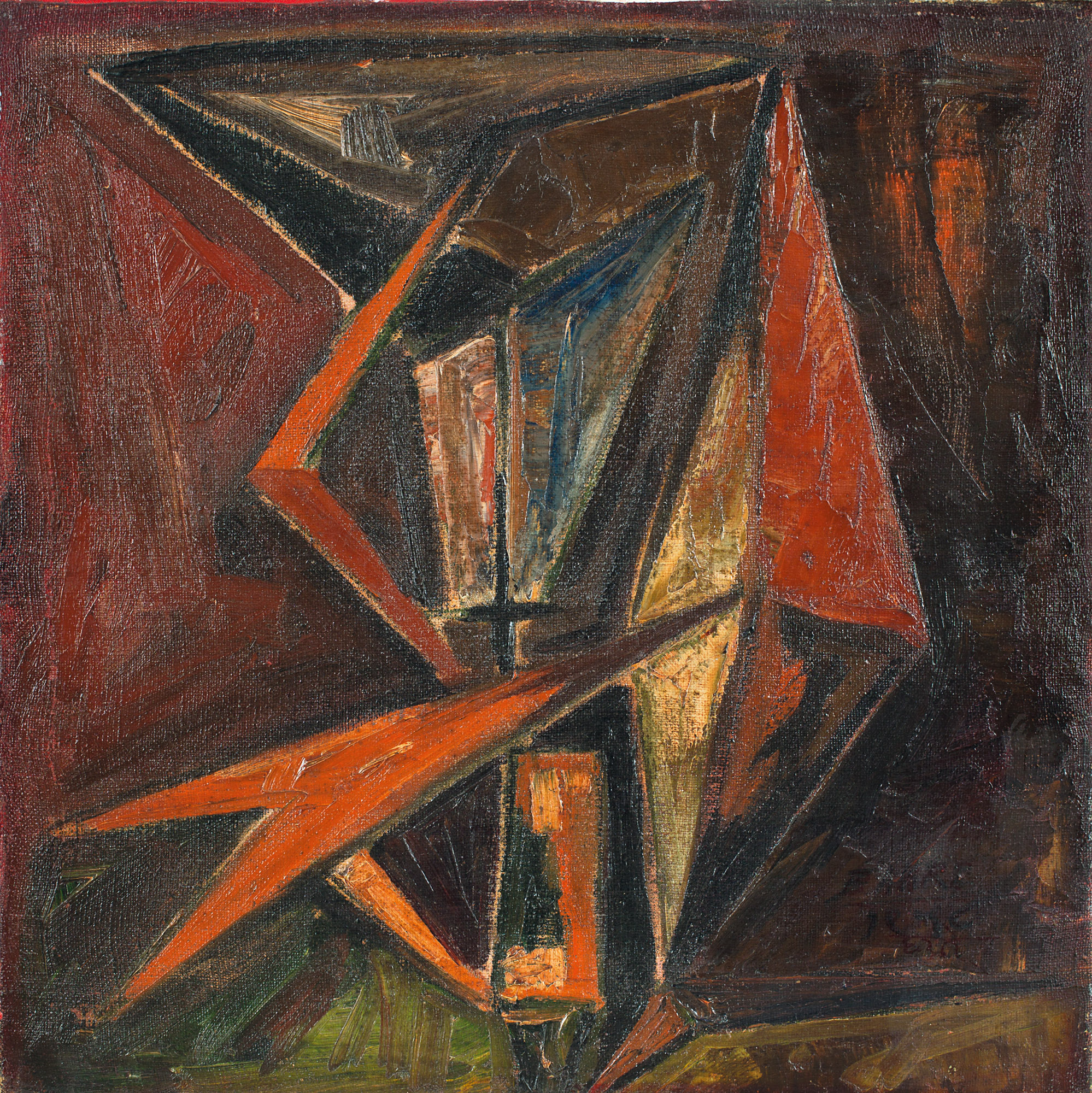
Trained in the academic style, the artist, between the mid- and late 1950s, creates unusual and dynamic spiky forms in exceptionally bright colours. Inspired by Paul Klee’s lyricism and Pablo Picasso’s de-structuring of form, starts bringing to his paintings a sculptural quality that critics describe as more structural than painterly. Flat, bright colours with ‘visibly quick and terse brushstrokes’ can be increasingly seen during the phase of the ’60s, highlighting his artistic command in still-life studies and landscapes even as the human form gets transformed by way of distortion, fragmentation and partial elimination. The international media takes note of the artist’s talent, The Times, London, noting the deftness with which the paintings get a unique, sculpturesque third dimension.
1960

Group exhibitions at Bear Lane Gallery, London, and Commonwealth Art Exhibition at Norwich Castle Museum, U.K.
1961
Solo show at Commonwealth Institute, London, and a group show at Grand Palais de Champs-Elysees Salon, Paris. The Guardian’s Eric Newton reviews his work.
1962
Solo show at Centaur Gallery, London; and a group exhibition at International Premiere Art Exhibition, Saigon.
1964
Solo exhibitions at Gallery Private Bale, Switzerland; Plattesberg International Art Festival, U.S.A., among other galleries in and around Michigan, U.S.A.
1965
Solo shows at Taj Gallery, and Gallery Chemould, both in Bombay.
His essay, ‘All Art is Either Good or Bad’ is published in Free Press Bulletin.
1966
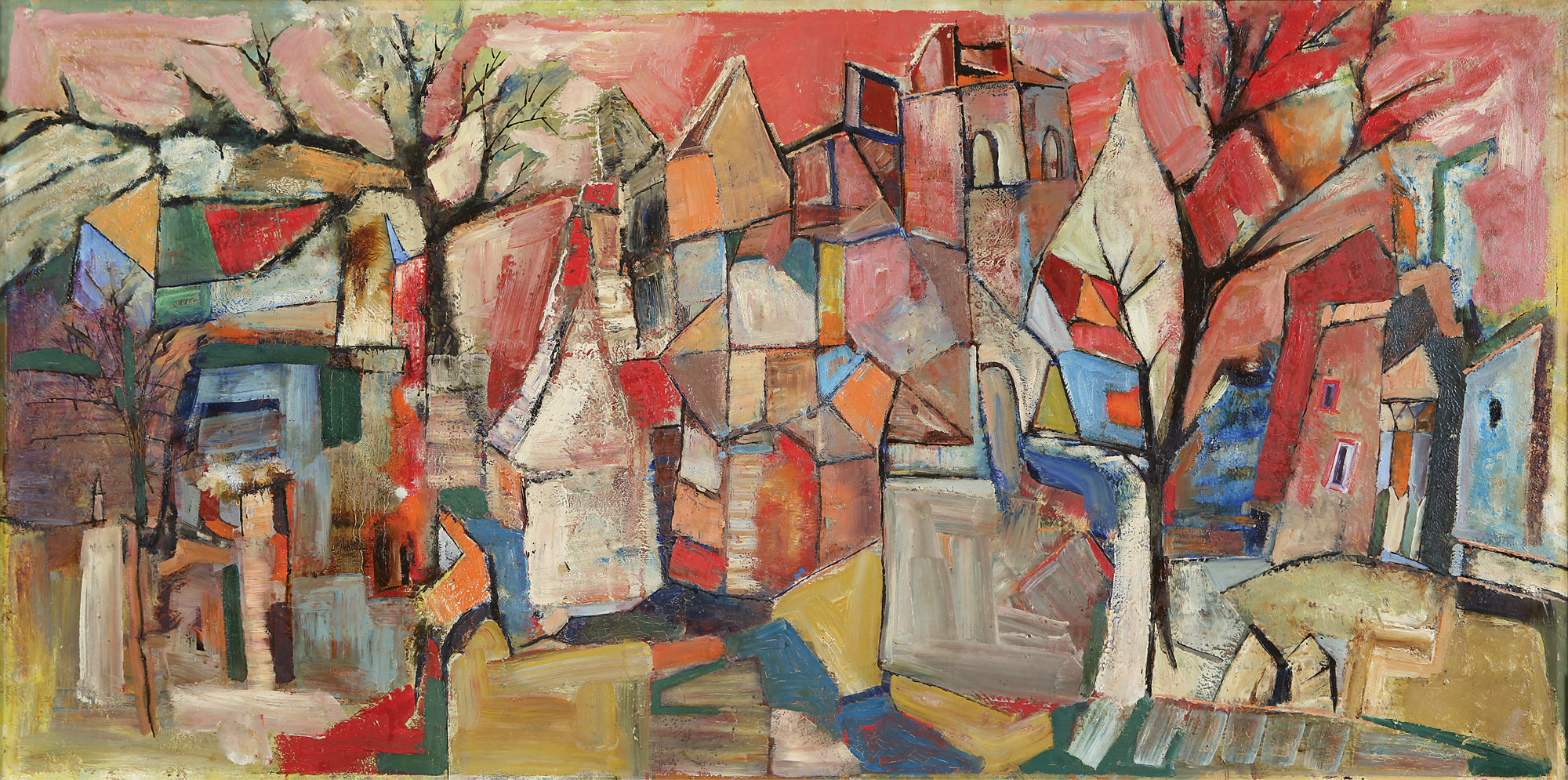
Solo shows at Pundole Gallery, Bombay; and Burton Art Gallery, Wirral, England.
1967
Group exhibition at Mermaid Theatre, London.
1969
Solo exhibitions at Fiddes Watt Gallery, and Nicholas Treadwell Gallery, both in London.
1971
Solo show at Nicholas Treadwell Gallery, London.
1988
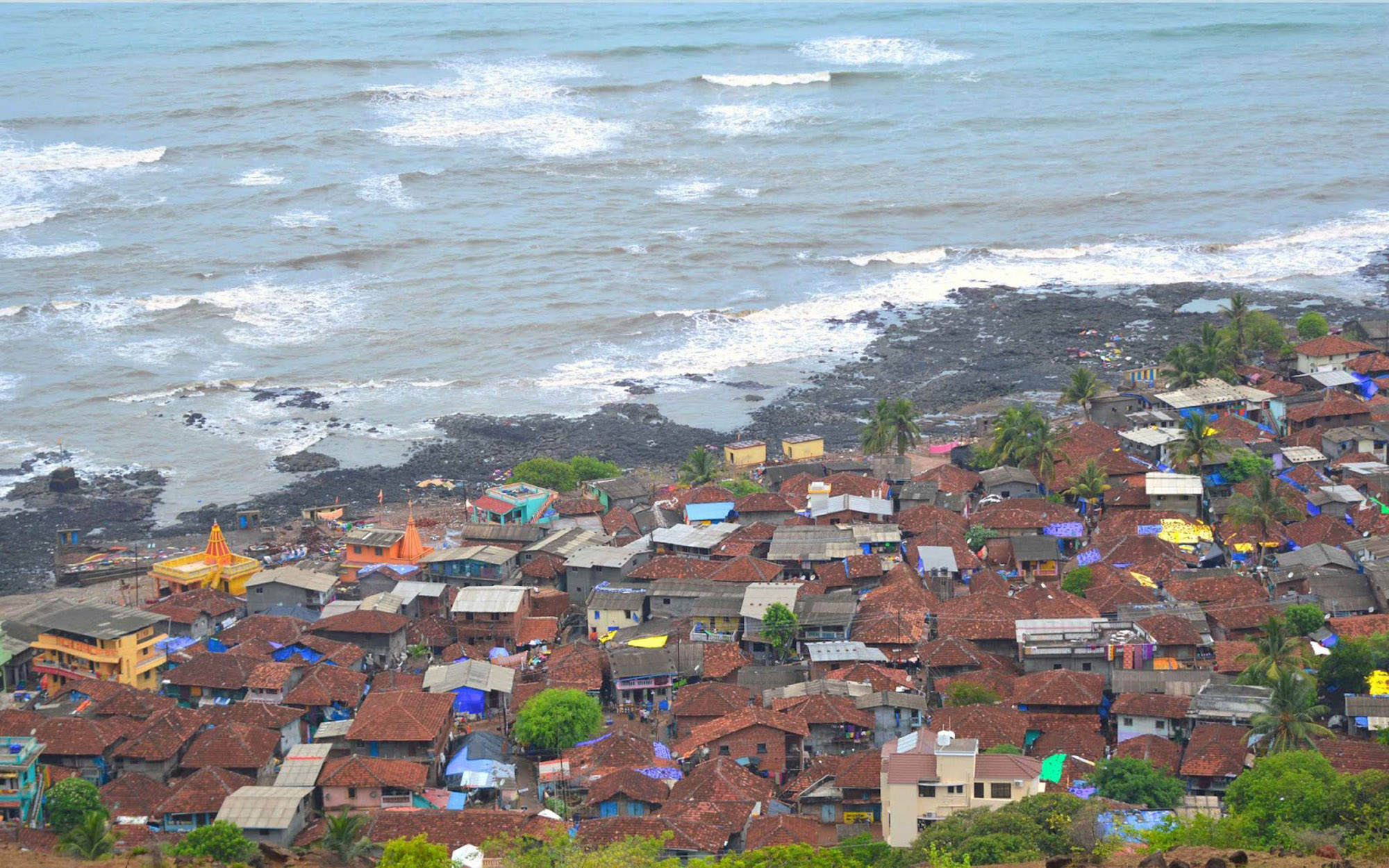
Returns to India after a bitter divorce and loss of money. He chooses a small, picturesque Konkan village, Murud-Harnai, in coastal Maharashtra to settle in. There, he does gardening, teaches at a local art school, besides continuing to sculpt and paint. In the artist’s own words, ‘I paint as I like. It is a compelling passion with me to keep alive, and I cannot help painting or sculpting.’
1996
Part of the group show, ‘The Moderns’, at National Gallery of Modern Art, Mumbai.
Participates in ‘Distillations’ at Birla Art Academy, Mumbai, India.
1997
Solo exhibition, ‘Paintings and Sculptures’ at Son-et-Lumiere Art Gallery, Mumbai.
1998
Personal struggles force the artist to become more of a recluse. In an interview for the weekly Sunday magazine, he lashes out at the art establishment and at artist M. F. Husain: ‘He has no time to talk to me. He dismisses me like I was a pariah.’
2002
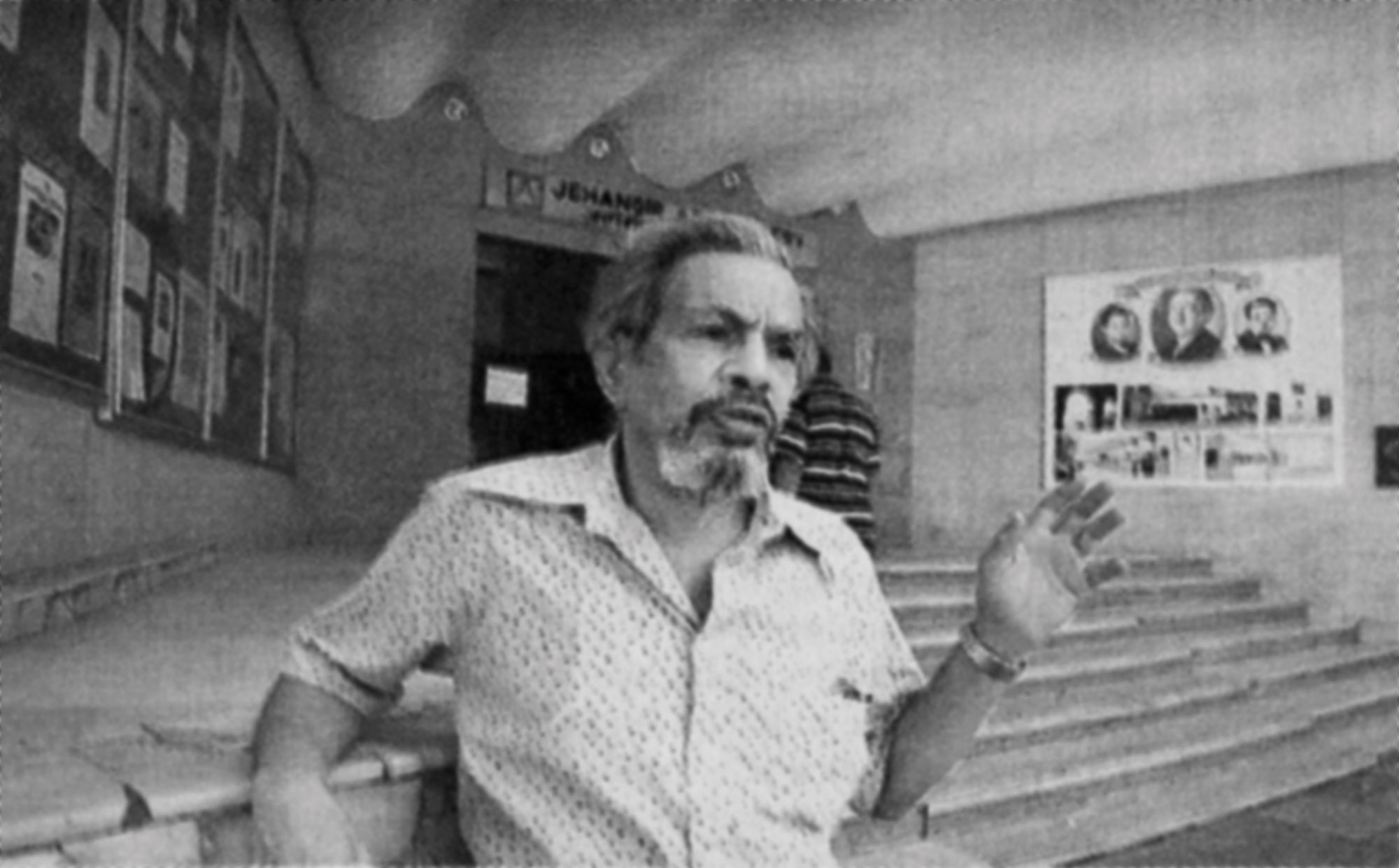
Has a show in Jehangir Art Gallery, Mumbai, for which there is critical appreciation in the media. One report describes the artist as a ‘multifaceted genius who has created wondrous art with whatever material has come his way and breathed a godlike character into his capacity to sculpt, paint, and draw his vision of life and living’.

Around this time, the media also starts reporting on the artist’s dwindling finances and poor health, thus, bringing to the attention of the art fraternity his sorry state of affairs.
2003-05
Represented in DAG’s ‘Manifestations’ in New Delhi and Mumbai along with other group exhibitions in Rabindra Bhawan and Lalit Kala Akademi, New Delhi, and Mumbai. Continues to show in most ‘Manifestations’ series in later years along with other important exhibitions in DAG.
2004
Receives a lifetime achievement award from Bombay Art Society.
2007
Suffers a heart attack on December 18 and dies on his way to the hospital after an oxygen cylinder at his home runs out.
In an interview published posthumously, which he gives to a website a week before his death, lashes out against the ‘mafia’ of art dealers and galleries, calling some of his former Progressive Artists’ Group members ‘opportunists’, accusing them of manipulating the media. In the interview, he accuses people of stealing his works and his friends for not looking after him given his poor health.
2010
Shows in the exhibition ‘The Progressives and Associates’, Grosvenor Gallery, London.
2019

An assemblage of cast aluminium sculptural pieces is conceptualised by DAG and is a major attraction at its booth at India Art Fair, New Delhi.
